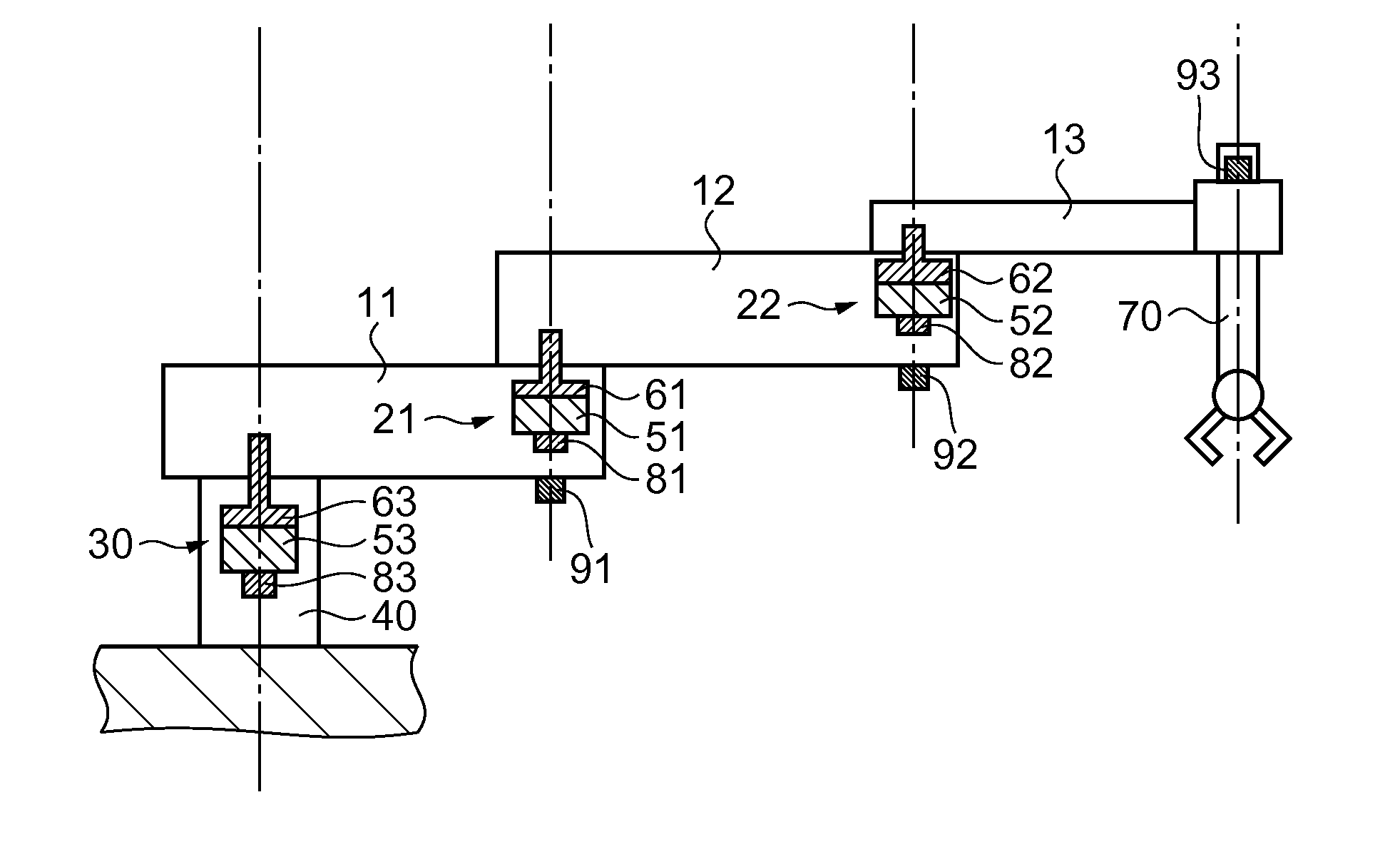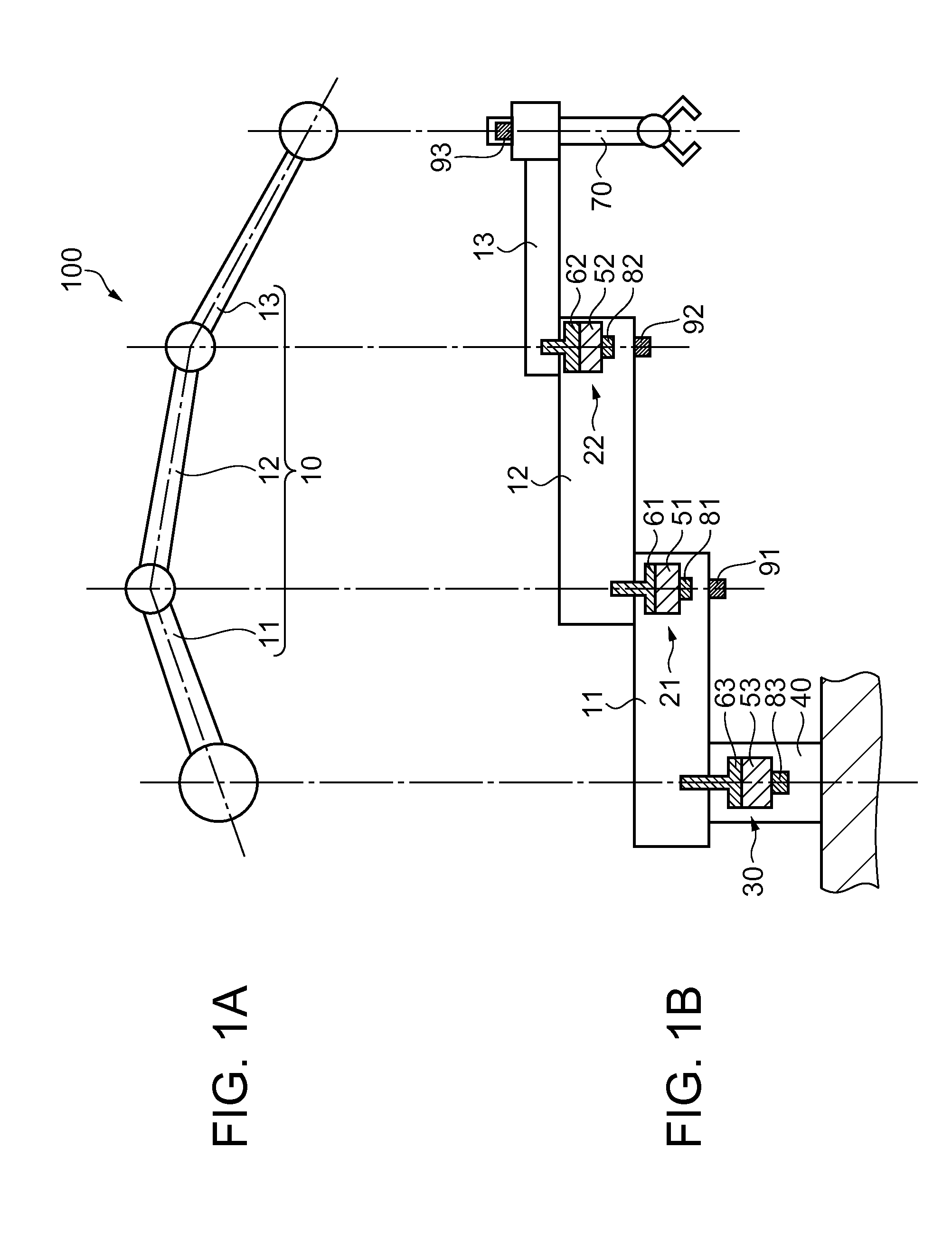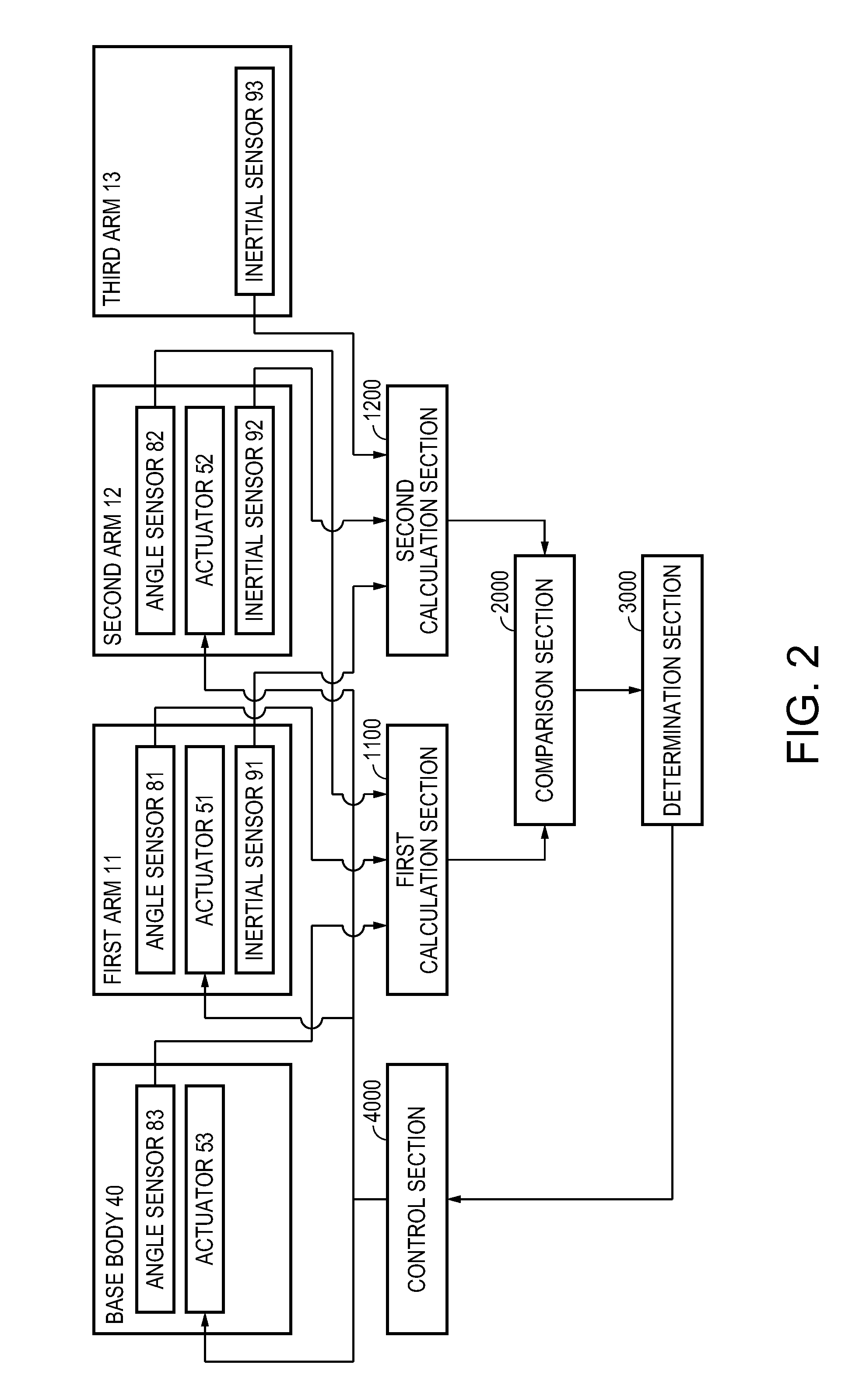Robotic device and method of controlling robotic device
a robotic device and robotic device technology, applied in the direction of electric programme control, program control, instruments, etc., can solve the problems of increasing the generation of vibration, failure to perform accurate failure determination, and deformation of the rigidity of the arm, so as to achieve reliable failure determination
- Summary
- Abstract
- Description
- Claims
- Application Information
AI Technical Summary
Benefits of technology
Problems solved by technology
Method used
Image
Examples
first embodiment
[0041]The first embodiment according to the invention will be explained. FIGS. 1A and 1B are diagrams showing a robotic device according to the first embodiment, wherein FIG. 1A shows a schematic plan view, and FIG. 1B shows a schematic cross-sectional view. The robotic device according to the present embodiment is a so-called three-axis horizontal articulated robot 100 (hereinafter referred to as a robotic device 100) having three arms linked rotatably in a horizontal direction.
[0042]The robotic device 100 is provided with an arm body 10 configured by rotatably and serially linking a first arm 11 and a second arm 12 with a first arm linkage device 21, and the second arm 12 and a third arm 13 with a second arm linkage device 22. The arm body 10 is further linked rotatably to a base body 40, which is fixed to a substrate, with a base body linkage device 30, and thus the robotic device 100 is constituted.
[0043]The first arm linkage device 21 includes an actuator 51, and a torque trans...
second embodiment
[0076]The second embodiment is different from the first embodiment only in the layout of the inertial sensors and the detection data to be the determination standard. Therefore, the explanation will be presented while providing the same constituents as those of the first embodiment with the same reference symbols.
[0077]FIGS. 4A and 4B are diagrams showing a robotic device according to the second embodiment, wherein FIG. 4A shows a schematic plan view, and FIG. 4B shows a schematic cross-sectional view. The robotic device according to the present embodiment is a so-called three-axis horizontal articulated robot 200 (hereinafter referred to as a robotic device 200) having three arms linked rotatably in a horizontal direction.
[0078]The robotic device 200 according to the second embodiment is different from the robotic device 100 according to the first embodiment in the point that two inertial sensors are provided to each of the arms. The first arm 11 is provided with inertial sensors 9...
third embodiment
[0104]Although in the first embodiment and the second embodiment the explanation is presented using the so-called horizontal articulated robotic device, the failure determination of a sensor in a direct acting robotic device will be explained in the third embodiment.
[0105]FIG. 8 is a schematic plan view of a robotic device 1000 according to the third embodiment. Further, FIG. 9 is a schematic diagram of an exterior appearance viewed from the direction of the arrow P in FIG. 8. In order for making the configuration of the robotic device 1000 clear, illustration of, for example, a housing for covering the principal part is omitted from FIG. 8. The robotic device 1000 is provided with a base body 300 fixed to, for example, a work table or a floor, an arm 400 movably attached to the base body 300, and a work holding device 500 attached movably to the arm 400 and having a work holding section 520 for holding a working tool or a work object.
[0106]The base body 300 is provided with a base ...
PUM
 Login to View More
Login to View More Abstract
Description
Claims
Application Information
 Login to View More
Login to View More - R&D
- Intellectual Property
- Life Sciences
- Materials
- Tech Scout
- Unparalleled Data Quality
- Higher Quality Content
- 60% Fewer Hallucinations
Browse by: Latest US Patents, China's latest patents, Technical Efficacy Thesaurus, Application Domain, Technology Topic, Popular Technical Reports.
© 2025 PatSnap. All rights reserved.Legal|Privacy policy|Modern Slavery Act Transparency Statement|Sitemap|About US| Contact US: help@patsnap.com



